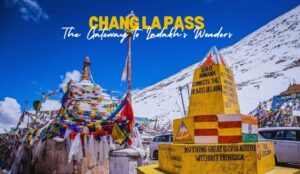🎶🌳Uttarakhand, a state in northern India, is a colorful canvas of diverse cultures and languages. each contributing to its rich tapestry of heritage. The state is home to several local languages, each with its unique characteristics, history, and significance. Let’s explore different local languages of Uttarakhand✨🏰🌾
The 8 Local Languages of Uttarakhand
1. Garhwali: The Soulful Sound of Garhwal
Garhwali, spoken in the Garhwal region, is more than a language; it’s an emotion. Its mellifluous tones echo in the valleys, telling tales of heroism and love. Garhwali literature, with its rich poetry and prose, captures the essence of life in the mountains. It’s not just a means of communication but a way of preserving the cultural ethos of the Garhwali people.
2. Kumaoni: Where History Meets Poetry
In the picturesque Kumaon region, Kumaoni weaves a linguistic tapestry that blends history and poetry seamlessly. With its roots deep in ancient folklore, Kumaoni literature narrates stories of gods and goddesses, kings and queens, and the eternal romance of the mountains. Kumaoni songs, often accompanied by traditional instruments, resonate with the spirit of the Kumaoni people, celebrating their rich cultural heritage.
3. Jaunsari: Guardian of Indigenous Wisdom
Jaunsari, spoken in the Jaunsar-Bawar region, is a language that guards the indigenous wisdom of its people. It’s a linguistic treasure trove, echoing with the chants of rituals and the whispers of centuries-old traditions. Jaunsari festivals and folk tales find their true essence in this language, making it a vital part of Uttarakhand’s cultural identity.
4. Bhotia: The Language of the Himalayan Borders
In the northern border areas of Uttarakhand resides the Bhotia community, speaking a language that echoes the Himalayan winds. Bhotia, belonging to the Tibeto-Burman language family, reflects the cultural amalgamation of the region. It’s a language that tells stories of trade along ancient Silk Routes, yaks grazing in high-altitude meadows, and the resilience of mountain communities.
5. Tharu: Songs of the Terai Plains
In the Terai region, the Tharu community speaks a language that resonates with the rhythms of the plains. Tharu language, rooted in the Sino-Tibetan language family, carries the cultural legacy of the indigenous Tharu people. It’s a language of dance and song, of agricultural rituals and communal harmony, painting a vibrant picture of life in the plains of Uttarakhand.
6. Rang: The Heritage of Pithoragarh
In the far reaches of Pithoragarh district resides the Rang tribe, speaking a language as ancient as the mountains themselves. Rang language is a testament to the tribe’s rich heritage, reflecting their close connection with nature and their traditional way of life. It’s a language that embodies the wisdom of generations, passed down through stories, rituals, and customs.
7. Hindi: The Lingua Franca of Uttarakhand
Hindi, the official language of India, serves as the lingua franca in Uttarakhand. Widely spoken and understood, Hindi bridges the linguistic gaps, facilitating communication and cultural exchange among the diverse communities in the state.
8. Urdu: The Cultural Thread of Harmony
Urdu, with its poetic charm and cultural richness, is also spoken and appreciated in Uttarakhand. It acts as a cultural thread, weaving harmony and understanding among communities, fostering a sense of unity in the midst of linguistic diversity.
Conclusion
In conclusion, Uttarakhand’s local languages are not just a means of communication but also the vessels of its cultural heritage. They bind communities, narrate stories of the past, and express the soul of the land. Preserving and celebrating these languages is not just a responsibility but also a celebration of the diverse and rich heritage of Uttarakhand.
FAQs Related to Local Languages of Uttarakhand
1. How important are these local languages in Uttarakhand’s cultural identity?
Uttarakhand’s local languages are integral to its cultural identity. They preserve ancient traditions, folk stories, and historical narratives, playing a crucial role in defining the unique heritage of the state.
2. Are these languages taught in schools in Uttarakhand?
Yes, Garhwali and Kumaoni languages are taught in some schools as a part of the regional language curriculum. However, the availability of these languages as a medium of instruction varies across different educational institutions.
3. How do these languages impact the local art and music scene in Uttarakhand?
Uttarakhand’s local languages deeply influence the region’s art and music. Folk songs, traditional dances, and cultural performances often incorporate lyrics and dialogues in these languages, preserving and promoting the linguistic heritage through artistic expressions.
4. Can tourists and visitors learn these local languages during their stay in Uttarakhand?
While it might be challenging to become fluent, tourists interested in learning basic phrases or greetings in Garhwali, Kumaoni, or other local languages can find local language classes or language exchange opportunities in some regions.
5. Are these local languages endangered?
While efforts are being made to preserve these languages, some, like Jaunsari and Rang, are considered endangered due to fewer speakers. Language preservation initiatives are crucial for their survival.





